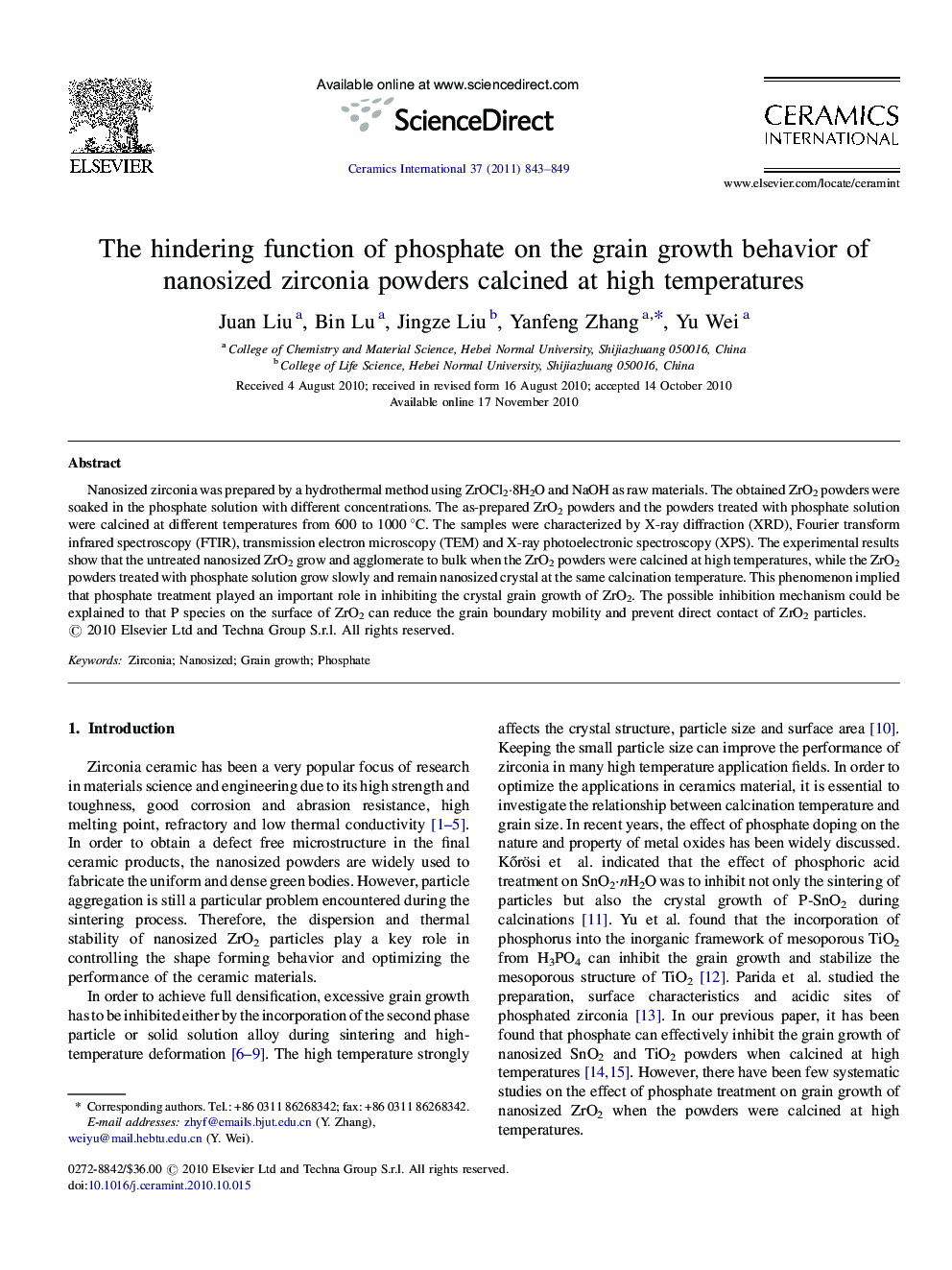| Article ID | Journal | Published Year | Pages | File Type |
|---|---|---|---|---|
| 10626248 | Ceramics International | 2011 | 7 Pages |
Abstract
Nanosized zirconia was prepared by a hydrothermal method using ZrOCl2·8H2O and NaOH as raw materials. The obtained ZrO2 powders were soaked in the phosphate solution with different concentrations. The as-prepared ZrO2 powders and the powders treated with phosphate solution were calcined at different temperatures from 600 to 1000 °C. The samples were characterized by X-ray diffraction (XRD), Fourier transform infrared spectroscopy (FTIR), transmission electron microscopy (TEM) and X-ray photoelectronic spectroscopy (XPS). The experimental results show that the untreated nanosized ZrO2 grow and agglomerate to bulk when the ZrO2 powders were calcined at high temperatures, while the ZrO2 powders treated with phosphate solution grow slowly and remain nanosized crystal at the same calcination temperature. This phenomenon implied that phosphate treatment played an important role in inhibiting the crystal grain growth of ZrO2. The possible inhibition mechanism could be explained to that P species on the surface of ZrO2 can reduce the grain boundary mobility and prevent direct contact of ZrO2 particles.
Related Topics
Physical Sciences and Engineering
Materials Science
Ceramics and Composites
Authors
Juan Liu, Bin Lu, Jingze Liu, Yanfeng Zhang, Yu Wei,
